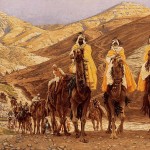 Myths, falsehoods, and exaggerations crowd the covers of greeting cards every December. Here are a few.
Myths, falsehoods, and exaggerations crowd the covers of greeting cards every December. Here are a few.
“Xmas” is not eliminating Christ from Christmas: “X” is the first letter of Christ in Greek.
“Santa Claus” is actually based on a person in Church history whose name was Saint Nicholas.
Jesus was most assuredly not born on December 25th. Mary did not ride on a donkey.
The “inn” was not Motel 6 but rather reference to someone’s home.
A “stable” or “barn” is a modern explanation of a cave.
“Manger” was a feeding trough for cattle probably hewn out of the cave’s rock floor.
“Three Magi” seems to be based solely on the number of gifts given celebrating Jesus’ birth.
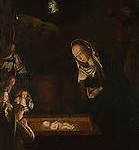 These and other fictions about Christmas arise from extra-biblical sources such as Christmas carols. This is for sure: “All was calm, all was bright” it was not.
These and other fictions about Christmas arise from extra-biblical sources such as Christmas carols. This is for sure: “All was calm, all was bright” it was not.
Jesus’ birth story[1] reads more like a reality detective show. He was born, as we would say, “out of wedlock.” “Unplanned pregnancy” is putting it mildly. In addition to the stigma of supposed premarital sex, Mary gave birth while she was literally “on the road.”
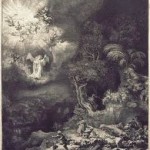 The first witnesses of “Christmas” were from the lowest rung of society—shepherds. Scholars who should have been following the events did not seem to care. Yet, astrological signs made pagan sorcerers caravan hundreds of miles to follow a star. Angels could not help themselves but exclaim. And then the bad guys show up and things get really interesting.
The first witnesses of “Christmas” were from the lowest rung of society—shepherds. Scholars who should have been following the events did not seem to care. Yet, astrological signs made pagan sorcerers caravan hundreds of miles to follow a star. Angels could not help themselves but exclaim. And then the bad guys show up and things get really interesting.
From the beginning, Jesus encountered threats against His life. The Palace enlisted the aid of foreign intellectuals to locate the baby. When outsiders outwitted the king, he dispatched shock troops to find and kill The Child.
 Warnings came through dreams. The family narrowly escapes to a foreign country. Ancient prophecies are fulfilled. Joseph—the silent-type, male-hero who literally does not utter a word—is the action figure responsible for Jesus’ safety. From a human perspective, God’s entrance into the world could not have been more mismanaged, or more exciting. But with The Infant came infanticide.
Warnings came through dreams. The family narrowly escapes to a foreign country. Ancient prophecies are fulfilled. Joseph—the silent-type, male-hero who literally does not utter a word—is the action figure responsible for Jesus’ safety. From a human perspective, God’s entrance into the world could not have been more mismanaged, or more exciting. But with The Infant came infanticide.
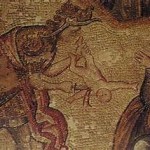 In a world of 24-7 news coverage, we are used to genocide. We sit, reclining comfortably, watching the horrors on our television screens. And then we change the channel. Were we to live under the authority of megalomaniac despots, we would better understand Jesus’ birth. William Barclay gives us a thumbnail sketch of the tyrant-at-the-time:
In a world of 24-7 news coverage, we are used to genocide. We sit, reclining comfortably, watching the horrors on our television screens. And then we change the channel. Were we to live under the authority of megalomaniac despots, we would better understand Jesus’ birth. William Barclay gives us a thumbnail sketch of the tyrant-at-the-time:
Herod was a master in the art of assassination. He had no sooner come to the throne than he began by annihilating the Sanhedrin, the supreme court of the Jews. Later he had slaughtered three hundred court officers out of hand. Later he had murdered his wife Mariamne, and her mother Alexandra, this eldest son Antipater, and two other sons, Alexander and Aristobulus. And in the hour of his death he had arranged for the slaughter of the notable men of Jerusalem.[2]
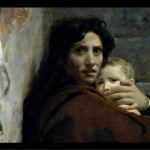 “Better to be Herod’s pig than his son” has become an apt proverb.[3] To target crown-claimers is one thing; to kill babies is another altogether. Genocide was perpetrated against defenseless innocents in Herod’s attempt to kill The One of whom ancient prophecies foretold. Death and destruction were part of Jesus’ birth.
“Better to be Herod’s pig than his son” has become an apt proverb.[3] To target crown-claimers is one thing; to kill babies is another altogether. Genocide was perpetrated against defenseless innocents in Herod’s attempt to kill The One of whom ancient prophecies foretold. Death and destruction were part of Jesus’ birth.
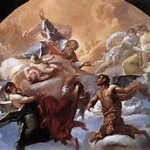 Attacks on Jesus did not begin in Matthew. As “the ruler of this world”[4] Satan has shed blood repeatedly over the millennia to wipe out the Messianic Line. Since Cain gave Steinbeck the storyline for East of Eden, “the ancient serpent” has attacked relentlessly.[5] The unnamed Egyptian pharaoh’s death sentence was stopped dead by two named Egyptian midwives.[6] Starvation and death forces a Hebrew woman to include foreigners into her family, only to open Messiah’s genealogy to Gentiles.[7] Inept planning by Haman is undermined through palace intrigue by Esther, a “closet” Jewess. Follow the pattern through the ages and we discover murderous plots and purges against God’s chosen people who would bear and bless Messiah.[8] Evil intentions never catch Heaven unaware.[9] Unfortunately, extermination practices against The Child means that children will always suffer.[10]
Attacks on Jesus did not begin in Matthew. As “the ruler of this world”[4] Satan has shed blood repeatedly over the millennia to wipe out the Messianic Line. Since Cain gave Steinbeck the storyline for East of Eden, “the ancient serpent” has attacked relentlessly.[5] The unnamed Egyptian pharaoh’s death sentence was stopped dead by two named Egyptian midwives.[6] Starvation and death forces a Hebrew woman to include foreigners into her family, only to open Messiah’s genealogy to Gentiles.[7] Inept planning by Haman is undermined through palace intrigue by Esther, a “closet” Jewess. Follow the pattern through the ages and we discover murderous plots and purges against God’s chosen people who would bear and bless Messiah.[8] Evil intentions never catch Heaven unaware.[9] Unfortunately, extermination practices against The Child means that children will always suffer.[10]
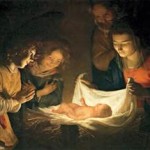 Jolted to remember that the entrance of God-in-flesh is the central chapter in the supernatural battle, we must begin in Genesis 3. The whole of The First Testament anticipates His coming. Matthew and Luke take up the narrated story; something akin to Law and Order or The Closer. Blameless people die. Evil seems to triumph. But then, the tables are turned. An authority figure appears. The bad guys lose. 1 John 3:8 is a verse that summarizes it all: “The reason The Son of God appeared was to destroy the devil’s work.”
Jolted to remember that the entrance of God-in-flesh is the central chapter in the supernatural battle, we must begin in Genesis 3. The whole of The First Testament anticipates His coming. Matthew and Luke take up the narrated story; something akin to Law and Order or The Closer. Blameless people die. Evil seems to triumph. But then, the tables are turned. An authority figure appears. The bad guys lose. 1 John 3:8 is a verse that summarizes it all: “The reason The Son of God appeared was to destroy the devil’s work.”
The Slaughter of The Innocents will never adorn the front of a Christmas card: but it should.
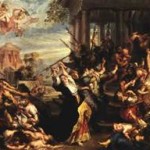 “Slaughter of the Innocents” is now part of the 52 essays in Mark’s book I Just Need Time to Think: Reflective Study as Christian Practice.
“Slaughter of the Innocents” is now part of the 52 essays in Mark’s book I Just Need Time to Think: Reflective Study as Christian Practice.
Dr. Mark Eckel is President of The Comenius Institute and teaches for Capital Seminary & Graduate School
Picture Credit: Paul Reubens most famous painting, Massacre of the Innocents,
https://en.wikipedia.org/wiki/Massacre_of_the_Innocents_(Rubens)#mediaviewer/File:Peter_Paul_Rubens_Massacre_of_the_Innocents.jpg
[1] Read Matthew 1-2 and Luke 1-2.
[2] William Barclay. 1958. The Gospel of Matthew, Vol 1. (Reprint, Westminster): 28.
[3] There is no indication that the statement was actually made; but all indications of Herod’s dispatching those who threatened his throne makes the comment bristle with truth. See Craig S. Keener’s historical connections in A Commentary on the Gospel of Matthew (Eerdmans, 1999): 110-12.
[4] John 12:31; 14:30; 16:11; 1 John 5:19.
[5] Genesis 4 marks both the first anticipation of The Child (“I have brought forth a man!” says Eve) and the first attempt to snuff out The Messianic lineage when Abel is killed. Seth is literally “the substitute” bearing the beacon of hope through “the new Adam” Enoch. [See Kenneth A. Mathews, Genesis 1-11:26 (Eerdmans, 1996): 290-91.] As for “the ancient serpent” read Revelation 12.
[6] Shifra and Pu’a are given more credence, more authority in biblical history than the dictator of a superpower. By refusing to name Egypt’s king, the writer strips him of his authority. The power shifts from the throne room to the nursery. As to whether or not the two women were Egyptian or Hebrew see Everett Fox The Five Books of Moses (Reprint, Shocken, 1995): 259.
[7] Read the book of Ruth.
[8] “Then the dragon was enraged at the woman and went off to make war against the rest of her offspring—those who obey God’s commandments and hold to the testimony of Jesus” (Rev 12:17).
[9] God will use the evil of men to praise Himself (Psalm 76:10). Read Genesis 45:4-11 and 50:20.
[10] Frederick Dale Bruner. 2004. Matthew: A Commentary, Vol. 1. (Revised, Eerdmans): 68.

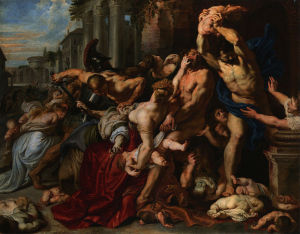
You are a true story – teller Mark! You have shared it well! The truth is often difficult to read.
You are a true story-teller Mark even when the truth is difficult to read.